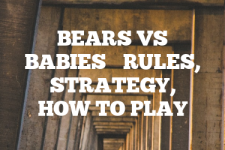Planet – A 101 Guide to Instructions, Rules & Winning Strategies
Introduction
Planet is a unique board game where players become gods, crafting their own worlds. It’s a tile-based game with elements of strategy, creativity, and a bit of luck. The game was released in 2018 and gained popularity among board game enthusiasts with generally favorable reviews and widespread ownership.

The goal is to create a planet that can support life and attract various animal species more effectively than your opponents. I find the game mechanically interesting due to its 3D planet cores, magnetic tiles, and the dynamic ecosystem-building gameplay. It’s a game that’s easy to learn but offers depth and replayability for those who dive into its strategic elements.
Quick Tip for Planet
Always keep an eye on the animals coming up in the next few rounds and plan your tiles to attract them to your planet.
Rules for playing Planet
Planet rules are straightforward. Each player gets a 12-sided 3D planet core. Throughout the game, you’ll select tiles representing different types of terrain and attach them to your planet core. The game lasts for 12 rounds, representing 12 turns for each player.
Each round, players select a tile and add it to their planet. The tiles have different terrain types like desert, water, forest, etc. After every three rounds, there’s an animal card scoring phase where players try to attract animals to their planet based on the habitats they’ve created. The player with the most points from animals at the end of the game wins.
Equipment and Setup for Planet
To play Planet, you need the game box which includes 4 planet cores, 50 magnetic tiles with different terrains, 45 animal cards, and 5 natural habitat objective cards. To set up, give each player a planet core and shuffle the tiles and animal cards. Place the animal cards in a row in the middle of the table to form the draw pile. Reveal as many animal cards as there are players plus one, and place them next to the draw pile. This row shows the animals that can be scored in the upcoming rounds.
How to Play Planet and Game Mechanics
The key game mechanics involve tile selection, planet core assembly, and animal attraction. Here’s how you play:
- Setup: Give each player a planet core and place the animal cards and tiles as described.
- Gameplay: Each round, players simultaneously pick a tile from the five available and attach it to their planet. Then, reveal new tiles for the next round.
- End of the Game: After 12 rounds, the game ends, and the player with the most points from attracted animals wins.
How to Win at Planet
To win at Planet, you need to attract the most animals to your planet. Animals are attracted to specific habitats that you create by placing tiles. For example, a bear might need a large forest area to live. You’ll need to plan your tile placement to create large connected habitats that can support the animals you’re targeting. It’s also important to watch what other players are doing and adapt your strategy accordingly.
Best Strategies for playing Planet board game
The goal is to attract various animal species to inhabit your planet based on how you’ve arranged the habitats. So, I find one of the best strategies in Planet is to specialize early on in the game by focusing on creating large, contiguous areas of a single habitat type. This can help you secure the cards that reward the largest regions of certain terrains.
It’s also important to balance your terrain placement to ensure you remain competitive for multiple animal cards, as some require specific combinations of habitats in proximity. As the game progresses, keep an eye on your opponents’ planetary developments and adapt your strategy accordingly. If you see an opponent cornering the market on a particular habitat, it might be wise to pivot and focus on different terrains and animals. Remember, strategic diversification can often lead to a more stable ecosystem and more scoring opportunities.
Lastly, pay attention to the animal cards coming up in the next few turns and plan your tile placements to meet those requirements ahead of time, ensuring that you can meet the criteria when the cards become active. With a mix of long-term planning and adaptability, you’ll be well on your way to dominating the cosmos in Planet.
Scenarios
Good scenarios in Planet might include having a diverse set of habitats that can attract a wide range of animals. A bad scenario could be when you’ve focused too much on one type of habitat and can’t attract enough animals to score points. To turn this around, start diversifying your habitats or focus on the natural habitat objectives for extra points.
Frequently Asked Questions about playing Planet game
- Q: Can I move a tile once it’s placed on my planet?
A: No, once a tile is placed, it cannot be moved. - Q: What happens if there’s a tie for attracting an animal?
A: If there’s a tie, the tied players each get a point. - Q: Can I see the upcoming animal cards?
A: Yes, the next few animal cards are visible to all players, so you can plan ahead. - Q: How many types of terrain are there?
A: There are five different types of terrain: water, desert, forest, ice, and grassland. - Q: Is there a solo version of the game?
A: The base game is designed for 2-4 players and does not have an official solo variant.
Additional Tips and Tricks
When playing Planet, it’s also useful to:
- Keep track of the natural habitat objectives, as they can be a game-changer.
- Balance your focus between creating large habitats and diversifying to attract a wider array of animals.
- Remember that the game is not just about the biggest habitat, but also about the right habitat for the animals coming up.
External Links
For more information on Planet and to get a copy of the official rulebook, check out the publisher’s website:

Eve Brownlee was a gamer before gaming communities on the internet were a thing. Eve grew up playing traditional, standard deck card games like Rummy and Bezique, taking an interest in the classics Backgammon and Chess. Parlor card games like Bridge continue to keep Eve active in the community. After a long career, primarily in horticulture for USDA in Maryland, Eve now travels and writes on The Pineapple (pineapples.info) and contributes to Quora/Pinterest topics. Contact Eve via email.



